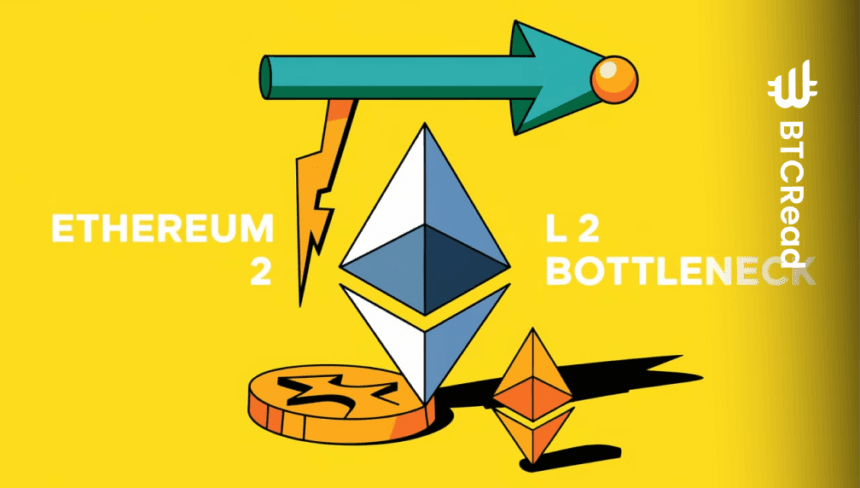The Layer 2 (L2) Ethereum scalability is getting choked with heavy traffic. We have seen how tweets from luminaries in the field have led to passionate debates about the space running out of capacity and the misery and the necessity of the solutions.
Brantly Millegan had a different take on the “Ethereum is dying” narrative. He was positive and said, “Ethereum and its L2s are so successful beyond all expectations that we have the problem of needing to scale L2 support even faster.”
Another industry observer highlighted a critical issue: L2s are nearing their limits. Currently, just two chains consume 55% of all blob space—specialized storage for L2s. At this rate, the system could hit a breaking point by mid-2025.
It is about the design of the Ethereum network. Each block allows only three unrestricted transactions, while hundreds compete for a spot. It’s like a three-lane road to handle traffic from 50 cities but stuck in congestion.
The conditions vary, and the consequence of this is the network effect on the users. These are the moments when Blob fees term most during trading, airdrops, and the time when a new L2 chain is launched, which then spreads to other channels and drives costs up.
The fact that Pectra’s forthcoming update, which practically raises the indirect cost to six per block, is temporary is not the only solution for the problem. The impact can be felt in various areas of the market. Financial institutions operating in decentralization suffer from high transaction expenses.
Non-custodial financial services cannot exploit their high income potential as ludicrious base fees hinder the gain. The end-users concerned suffer the most, with some companies even increasing their fees by up to 300%.
Ethereum developer solutions are in the works
Software developers are in a race to address the problem. The roadmap is a mix of short-term tactics supplemented by products like Pectra’s upgrade. Mid-term adjustments include integrating PeerDAS into the platform as well as long-term projects for advanced data availability scaling, which are also in the plans. Still, it isn’t certain whether these solutions will come in time.
Vitalik Buterin suggests that the doubling of the blob should be on priority. This issue is more important than any other upgrade in Ethereum’s pipeline. But, regardless of this, it is nothing but stalling of the inevitable.
This crisis exemplifies Ethereum’s success and challenges. If the Ethereum network does not scale efficiently, users and projects might seek better alternatives.







